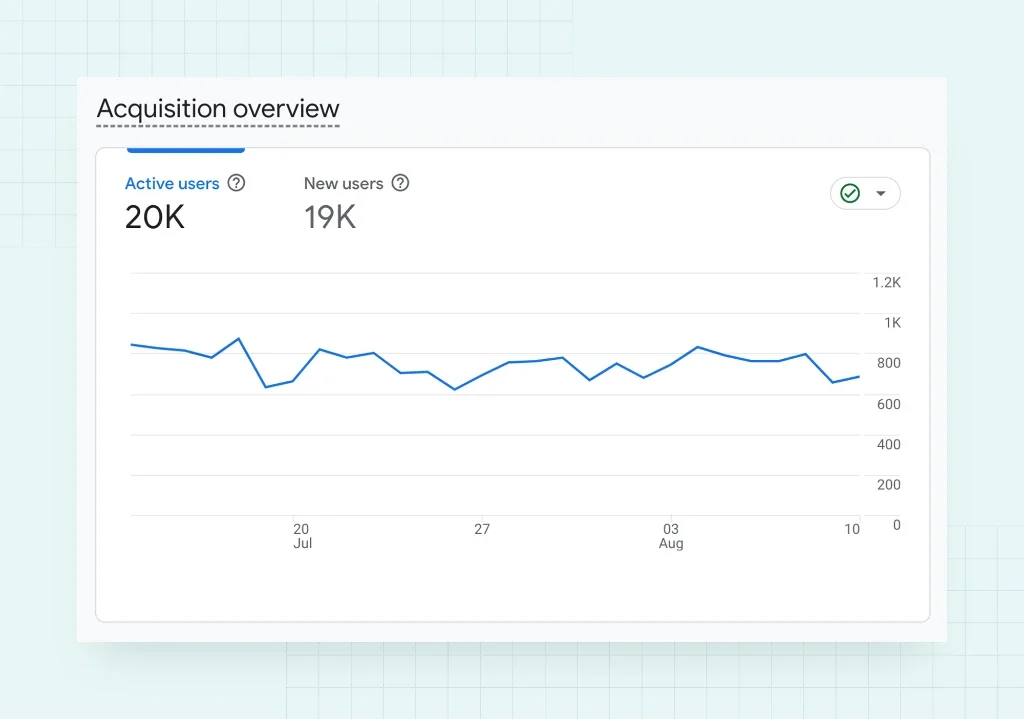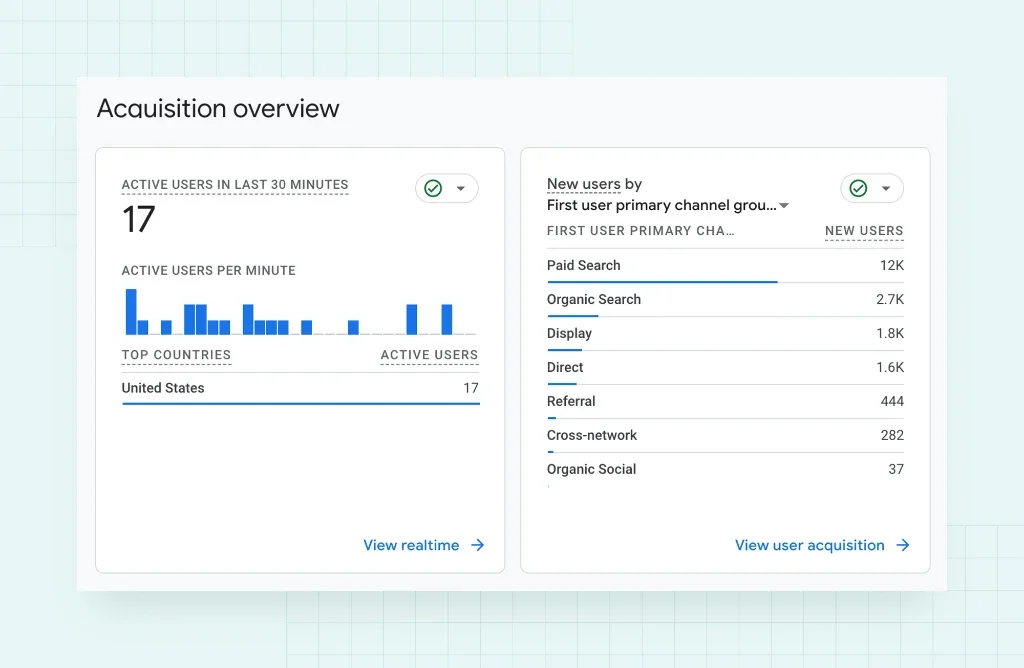If no one knows your business exists, is your website’s visibility the problem? The internet is a massive ocean, and SEO is the lighthouse that guides customers to your site. With millions of searches happening every second, SEO is one of the most powerful, cost-effective ways to drive targeted traffic to your website. If you’re not showing up in the top five Google search results when someone needs what you offer, you’re practically handing business over to your competitors.

SEO Drives Clicks to Your Website
SEO or search engine optimization is one of the best ways to get free traffic to your website. When people search on Google, they’re usually looking for something specific answers, products services. If your site shows up near the top of the search results, you really have a much better chance of getting clicked. In fact, over 2 thirds of clicks go to the 1st 5 results. So if you’re not there, you know, you’re really missing out on a lot of potential visitors.
How do you get in the top five results? Google Analytics, particularly GA4 Google’s new analytics tool, can help you and your company map it out. It can help you measure your visibility and pivot when necessary to get higher up in the search results.
Measuring the Success of SEO
Google Analytics is a free tool and a great way to see behind the scenes and track how your site is performing. The following reports provide great insights:
- Acquisition Reports: Show where your organic traffic comes from.
- Engagement Reports: Track how visitors interact with your content.
- Conversion Reports: Measure actions taken on your site.
- Landing Page Reports: Highlight top-performing pages for organic visits.

These metrics reveal how people find you, where your audience is coming from, and how well your SEO efforts are working so you can make informed marketing decisions.
Identifying Broader Use Cases for Google Analytics
You are all set up with a digital ad campaign and you really want to know if it’s working. Google Analytics can track performance for paid ads, blog content, writing, or just to help you improve your site’s design. It gives you a great overview of what’s working and what’s not.
It’s truly a powerhouse of information. Let’s say you just launched a new product. Google Analytics can let you know:
- Engagement depth including how long visitors stay on your pages
- Traffic sources indicating where they came from (Google search, referral, direct)
- Device preferences, specifically mobile vs. desktop behavior patterns
- User flow telling you whether they explore your site or leave quickly
These insights provide actionable clues that can sharpen your digital marketing strategy. Using the data, you can refine your website’s performance and ultimately boost your ROI.
Explaining Key SEO Metrics
Two important SEO metrics better reveal what visitors are doing when they get to your site and how they are reaching it.
Bounce Rates: Sometimes visitors come to a website and leave before they click to another page. It could indicate a slow loading page (see Video Optimization blog post) or the content didn’t meet their expectations (see Quality Content blog post). It’s a helpful signal that you may need to change the content on that page.
Organic Sessions: When someone is searching on Google, finds your company, and clicks through to it, that’s an organic session. It’s an unpaid (they didn’t click from an ad) search result. This SEO metric shows how well your content is ranking in search engines without spending money on ads.
Google Analytics is a great tool to monitor these areas. It can also help you measure what really counts for your business.
Setting Goals for SEO Success
A website can be an incredible marketing tool when used properly. It requires regularly updating content, having distinct calls to action, and content forms that allow a company to gather info from site visitors. Setting goals through Google Analytics can help measure these efforts and track if visitors are taking the actions you intended on each page.
Goal setting is also a powerful tool for SEO, because it allows you to track traffic and conversions. For example, one page may attract many visitors but generate very few actions, while another page with less traffic might drive more conversions. Understanding these differences helps you prioritize where to focus your efforts on the site. Ultimately, it’s about the quality of interactions rather than simply the number of views.
“Good SEO isn’t just about more people on your site. It’s getting the right people. When you set up goals, you see, which pages bring in visitors who take action.”
Using Analytics to Improve Conversions and Content
With all the information coming in from Google Analytics, it’s important to set filters to ensure the data is accurate. The filters help block spam traffic and make sure the data is from actual users. In turn, your reports will be more accurate and reliable.
When users get to your site, do you have a call to action (CTA) to tell them what you want them to do next? Maybe you want them to download a guide, sign up for updates, or purchase something. Google Analytics can tell you if your CTA is working. Are people even seeing it? Are they clicking through? The data will let you know so you can rethink its location or maybe even the message.
Building a website comes with a lot of content creation for new and existing pages. It’s essential to know how these pages are performing so you can change your messaging, tone, voice, and style when needed.
Google Analytics informs you which pages are getting the most traffic and how long visitors are interacting with them. For pages with higher bounce rates or shorter average time on the page, you may need to add more detail, a clearer headline, or a stronger call to action. For pages that are performing well, keep them fresh and relevant to remain strong for SEO.

Keep Your Pages Relevant for SEO
Your top performing pages are gold. You want to keep them fresh and updated just because a page is doing well today doesn’t mean it will rank well forever. SEO changes and so do search trends. Make sure your pages stay relevant by updating them with new stats, images, or answers to related questions that people are searching for.”
Tracking and Learning From Sitewide Performance
A content drilldown report will help you compare how different sections of your site are performing. You can track the following metrics:
- Page views
- Bounce rate
- Time on page
It will help you figure out where you need to spend more time to improve.
Another feature on the reports is annotations. You can leave notes for yourself on the reports to track progress over time. Marc offered the following as an example:
If you update a blog post on July 10, you can leave an annotation to mark that date. Then, weeks later, if traffic jumps or drops, you’ll know why. It’s a smart way to connect changes you made with changes in your results. It helps you learn what worked and what didn’t.
It’s a comprehensive tool for keeping you updated on next steps for your site and tracking page performance. You can also use it to document external mentions and backlink campaigns to observe incoming referral traffic from outside sources.
Assessing Referral Traffic’s Impact on SEO
Google Analytics tracks something called “referral traffic,” which are visits that come to your site from other websites. If you’re doing off-page SEO, such as publishing guest blog posts or building backlinks, referral traffic helps you see if those efforts are paying off.
For example, if someone clicks a link to your site from a blog post on another website, Analytics will show exactly where they came from. Backlinks are one of the top-ranking factors in SEO. When you invest time in building links from external sources, you want them to drive real visitors to your site.
That’s where Analytics are essential. They tell you where your efforts are successful and which ones may not be worth the effort. You can also get insights into how your strategy is working across platforms.
Analyzing How Marketing Channels Work Together
A digital marketing content strategy typically works through multiple media to get in front of the most people. You can track your progress using the “Multi-Channel Funnels” report in Google Analytics. It shows how different channels including SEO, social media, email, and paid ads, work together before someone converts.
In marketing, you need several touchpoints to make a connection with a potential customer. Using Analytics, you can follow their journey and how it got them to their purchase or conversion.
“For example, someone might first find you through a blog post, then come back later from an email, and finally make a purchase. Google Analytics tracks that entire journey so you can see how SEO fits into the bigger picture.”
The tricky part is knowing what counts as an organic session. Someone may have reached your site by clicking on a link. Then they come back later by typing in the URL or through a search and that method may show up as organic. Organic data is tied to sessions, not individual users. Multi-channel tracking gives a better view of how people convert.
Extracting Keyword Insights
As good as Google Analytics is, it’s not going to be able to give you all the keyword data you may want. Connect it with Google Search Console, which explains:
- Which queries are bringing people to your site
- Which keywords to target in future content
- What internal site search terms people are looking for

Unlocking Keyword Insights with Google Search Console
Google Analytics won’t show you all your keyword data, but if you connect it with Google Search Console, you’ll get much more insight. You can see which search queries are bringing people to your site and which ones are not that helps you find new keywords to target in future content. Another cool tip is to look at what people search for inside your site. If visitors are using your internal search tool, those queries can give you ideas for new blog posts or product pages.
Recognizing the Importance of Good Internal Search Function
A visitor gets to your site, goes to the internal search, types in a query, and doesn’t get the results they want. That’s going to track as an exit from your site. Google Analytics pays attention to that data. It tracks how many people use the search bar and what they type in. If you are seeing a high number of search exits, your site may be missing the right content, and it will show you the gaps. Then you can go back in and update your site to make it work best for users, so they’ll stay there longer and explore.
However, it comes down to overall user experience and how well your site is performing.
Monitoring Site Speed and Device Performance
One of the quickest ways to increase exit rates or bounces is a bad website experience. If a site is taking too long to load, it will affect both SEO and the user experience. Google Analytics has a Site Speed report that will tell you how long, on average, your pages take to load.

You can take this information and send to your web developer to fix, so the pages will start loading faster, rank better, and keep visitors on your site longer.
If your site isn’t currently mobile responsive, you’ll want to update it. An increasing number of users are on their mobile devices surfing the web. Pay attention to how your site performs on both phones and PCs, particularly by checking Analytics. It’s a big red flag if mobile users are having a bad experience. That’s why checking bounce rates, page views, and time on site will give you insights about any improvements you can make for your mobile layout, fonts, or loading times.
Paying attention to all these metrics from Google Analytics will help you decipher the code on how to keep your site climbing in the rankings and keep users coming back.
Key Takeaways
Google Analytics is more than just a data tool. It’s your SEO compass.
- Track and Measure: Use Google Analytics reports to monitor traffic sources, engagement, and conversions.
- Focus on Quality: Prioritize engaged visitors and conversions over raw traffic numbers.
- Clean Your Data: Use filters to remove spam and ensure accuracy.
- Leverage All Channels: Understand how SEO works with other marketing channels.
- Optimize Continuously: Update content based on performance insights.









